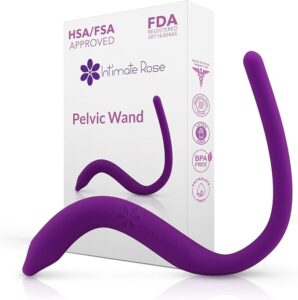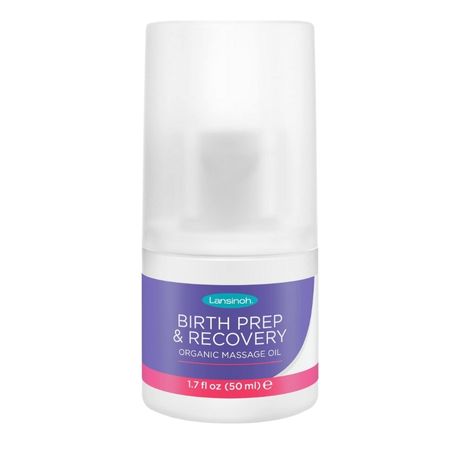
If you’re expecting, you may have come across discussions on perineal massage as a method to prepare your body for labor and potentially reduce the risk of tearing during childbirth. But with mixed opinions and information floating around, it can be tough to decide if this technique is right for you. Let’s explore what perineal massage is, how it works, and practical advice for incorporating it into your routine confidently and safely.
Perineum Anatomy

Here’s a breakdown of the female perineum:
Vagina
- The vagina is a muscular tube that connects the cervix (the lower part of the uterus) to the vulva.
- It serves several functions:
- Menstruation: The passage for menstrual blood to exit the body.
- Childbirth: The passage for a baby to exit the body during childbirth.
- Sexual intercourse: Receives the penis during sexual intercourse.
Clitoris
- The clitoris is a small, sensitive organ located at the top of the vulva.
- It is the primary female sexual organ and is responsible for pleasure during sexual activity.
Labia
- The labia are the folds of skin that surround the vaginal opening and urethra.
- There are two types:
- Labia majora: The outer, larger folds of skin.
- Labia minora: The inner, smaller folds of skin.
Perineum
- The perineum is the diamond-shaped area between the vagina and the anus.
- It contains muscles and nerves that help with functions like urination, defecation, and childbirth.
Anus
- The anus is the opening at the end of the digestive tract through which stool is expelled.
- It is surrounded by the anal sphincter muscles, which control the opening and closing of the anus.
Anal Sphincter Muscle
- The anal sphincter muscle is a ring of muscle that surrounds the anus.
- It has two parts:
- Internal anal sphincter: Involuntary muscle that helps maintain continence.
- External anal sphincter: Voluntary muscle that allows for conscious control of bowel movements.
Position of the Anal Sphincter Muscle
- The anal sphincter muscle is located at the very end of the digestive tract, surrounding the anus.
- It is positioned below the perineum and vagina.
What is Perineal Massage, and Does it Really Work?
You may be wondering, “Is perineal massage really necessary, and does it make a difference?” This is a common question and concern among pregnant women. The idea of performing any kind of massage in this sensitive area may feel uncomfortable or even unnecessary. But studies have shown that perineal massage can indeed be effective in increasing flexibility in the perineal area, which can reduce the risk of tearing during childbirth.
Reassurance: You’re Not Alone in Having Concerns
It’s completely normal to feel a little hesitant. Many first-time moms (and even those with previous births) have similar concerns. The good news is that perineal massage is safe when done correctly, and it can offer positive benefits by helping prepare the perineum—the area between the vagina and anus—for labor.
Why Perineal Massage Works: A Simple Science Breakdown
Perineal massage is thought to work by increasing blood flow to the perineal area and gently stretching the tissues, making them more flexible. During birth, the perineum has to stretch considerably to allow the baby’s head and shoulders to pass. Regular massage can help the tissues adapt to this change more easily, reducing the likelihood of needing an episiotomy (a surgical cut made to widen the vaginal opening) or experiencing natural tearing.
Studies have shown that women who regularly practice perineal massage during the final weeks of pregnancy are less likely to require interventions. The massage works on a basic principle of gradual stretching and blood circulation, which promotes the elasticity of the tissue.
How to Do Perineal Massage: Practical Steps
Ready to give it a try? Here’s a step-by-step guide to help you perform perineal massage safely and comfortably.
- Timing is Key: Start practicing perineal massage around the 34th week of pregnancy. Try to do it 3-4 times per week, but listen to your body. If you experience any discomfort, adjust the pressure or frequency.
- Find a Comfortable Position: Sit in a comfortable position where you feel relaxed, or try reclining with your legs slightly apart. Some women find it easier to perform the massage in the shower or after a warm bath, as warmth helps relax the tissues.
- Use a Lubricant: Apply a natural, unscented oil (like olive oil, coconut oil, or vitamin E oil) to your thumbs and the perineal area. Lubrication is essential for reducing friction and making the massage comfortable.
- Start with Gentle Pressure: Insert your thumbs about 1-2 inches into the vagina. Press downwards towards the rectum and then out to the sides in a gentle U-shaped motion. Hold the stretch for about 1-2 minutes if it’s comfortable. Massage your perineal area slowly for 10 minutes each day. After 1 to 2 weeks, you shold notice more stretchiness and less burning in your perineum.
- Breathe and Relax: Focus on taking deep breaths as you massage. This helps relax your muscles and makes the massage more effective.
- Gradually Increase Stretching: Over time, as your body adjusts, you can apply slightly more pressure or extend the stretch. Just remember to be gentle and avoid any discomfort.
Partners: If your partner is doing the perineal massage, follow the same basic instructions, above. However, your
partner should use his or her index fingers to do the massage (instead of thumbs). The same side-to-side,
U-shaped, downward pressure method should be used. Good communication is important—be sure to tell your
partner if you have too much pain or burning!
Perineal Massage Tool For Pregnancy

Perineal Massage Oil For Birth And Labor

Prepare for Birth with This Perineal Massage Oil

Addressing Concerns: Is it Supposed to Feel Uncomfortable?
Some women feel a slight stretching sensation during perineal massage, which is normal. However, it should never feel painful. If you experience sharp pain or severe discomfort, stop immediately. You may want to consult your healthcare provider, who can guide you on how to modify the technique to suit your comfort level.
Additional Tips for Safe and Effective Perineal Massage
- Make It a Routine: Like any other preparation for labor, consistency is key. Aim for short, regular sessions instead of long, sporadic ones.
- Involve Your Partner (if Comfortable): Some women find that having their partner assist with perineal massage makes it easier and more comfortable.
- Don’t Overdo It: Massage should be gentle. The goal is to gradually increase the flexibility of the perineal tissues without causing pain or discomfort.
What If I Don’t Feel Comfortable Doing Perineal Massage?
If perineal massage feels uncomfortable or simply isn’t for you, there’s no need to stress. Many women have healthy births without doing perineal massage. It’s just one option among many for labor preparation, and its benefits vary from person to person. You may also consider pelvic floor exercises or prenatal yoga, which also help prepare the body for childbirth.
Final Thoughts: Empowering You for a Positive Birth Experience
Perineal massage is one of several techniques that can help you feel more prepared for labor, and it may reduce the risk of perineal tearing. By taking the time to understand how to perform it correctly and incorporating it into your routine, you’re setting yourself up for a positive birthing experience.
Remember, the most important thing is to listen to your body and consult with your healthcare provider if you have any concerns or need guidance tailored to your unique pregnancy.
Frequently Asked Questions (FAQs)
When should I start doing perineal massage during pregnancy?
It’s recommended to begin perineal massage around the 34th week of pregnancy. Practicing it 3-4 times a week can help prepare the perineal area for childbirth. However, always check with your healthcare provider before starting any new techniques during pregnancy.
Is perineal massage supposed to hurt?
Perineal massage should not be painful. You might feel a gentle stretching sensation, but it should not cause sharp pain or severe discomfort. If you experience pain, reduce the pressure or stop the massage. Try using more lubricant and adjust your position to improve comfort.
Can my partner help me with perineal massage?
Yes, many women involve their partners to make the process easier and more comfortable. However, whether to involve a partner is a personal choice, and it’s perfectly fine to perform it yourself if that feels better for you.












